English
CONTENTS
FOREWORD
INTRODUCTION
1 Scope
2 Normative references
3 Terms, definitions and abbreviations
3.1 Terms and definitions
3.2 Abbreviations
4 General
5 Test environments and limitations
6 Applications
6.1 Radiated immunity
6.2 Radiated emissions
6.3 Shielding (screening) effectiveness
7 Test equipment
8 Chamber validation
9 Testing
10 Test results, test report and test conditions
Annex A (informative)
Reverberation chamber overview
Annex B (normative)
Chamber validation for mode-tuned operation
Annex C (normative)
Chamber validation and testing for mode-stirred operation
Annex D (normative)
Radiated immunity tests
Annex E (normative)
Radiated emissions measurements
Annex F (informative) Shielding effectiveness measurements of cable assemblies, cables, connectors, waveguides and
passive microwave components
Annex G (informative) Shielding effectiveness measurements
of gaskets and materials
Annex H (informative)
Shielding effectiveness measurements of enclosures
Annex I (informative)
Antenna efficiency measurements
Annex J (informative) Direct evaluation of reverberation performance using field anisotropy and field inhomogeneity coefficients
Annex K (informative) M
easurement uncertainty for chamber validation – Emission and immunity testing
Bibliography
Figures
Figure A.1 – Typical field uniformity for 200 independent tuner steps
Figure A.2 – Theoretical modal structure for a 10,8 m x 5,2 m x
3,9 m chamber
Figure A.3 – Theoretical modal structure with small Q-bandwidth (high Q)
superimposed on 60th mode
Figure A.4 – Theoretical modal structure with greater Q-bandwidth (lower Q) superimposed on 60th mode
Figure A.5 – Typical reverberation chamber facility
Figure A.6 – Theoretical sampling requirements for 95 % confidence
Figure A.7 – Normalized PDF of an electric field component at a fixed location for a measurement with a single sample
Figure A.8 – Normalised PDF of the mean of an electric field component at one fixed location for a measurement with N independent samples
Figure A.9 – Normalised PDF of the maximum of an electric field component at a fixed location for a measurement with N independent samples
Figure A.10 – Chamber working volume
Figure A.11 – Typical probe data
Figure A.12 – Mean-normalized data for x-component of 8 probes
Figure A.13 – Standard deviation of data for E-field components of 8 probes
Figure A.14 – Distribution of absorbers for loading effects test
Figure A.15 – Magnitude of loading from loading effects test
Figure A.16 – Standard deviation data of electric field components for eight probes in the loaded chamber
Figure B.1 – Probe locations for chamber validation
Figure C.1 – Received power (dBm) as a function of tuner rotation (s) at 500 MHz
Figure C.2 – Received power (dBm) as a function of tuner rotation (s) at 1 000 MHz
Figure D.1 – Example of suitable test facility
Figure E.1 – Example of suitable test facility
Figure E.2 – Relating to the calculation of the geometry factor for radiated emissions
Figure F.1 – Typical test set-up
Figure G.1 – Typical test set-up
Figure G.2 – Typical test fixture installation for gasket and/or material testing
Figure G.3 – Test fixture configured for validation
Figure H.1 – Typical test enclosure installation for floor mounted enclosure testing
Figure H.2 – Typical test enclosure installation for bench mounted enclosure testing
Figure J.1 – Theoretical and typical measured distributions for field anisotropy coefficients in a well-stirred chamber
Figure J.2 – Theoretical and typical measured distributions for field anisotropy coefficients in a poorly stirred chamber
Figure J.3 – Typical measured values for field anisotropy coefficients as a function of N in a well-stirred chamber
Figure K.1 – Average emitted power as a function of frequency for a typical unintentional radiator
Figure K.2 – Estimated standard uncertainty
Figure K.3 – Mean normalized width (in dB) of a n%
-confidence interval
Figure K.4 – Individual mean-normalized interval boundaries (in linear units) for maximum field strength as a function of the number of independent stirrer positions N
Tables
Table B.1 – Sampling requirements
Table B.2 – Field uniformity tolerance requirements
Table J.1 – Typical values for total field anisotropy coefficients for ‘medium’ and ‘good’ reverberation quality
Français
SOMMAIRE
AVANT-PROPOS
INTRODUCTION
1 Domaine d’application
2 Références normatives
3 Termes, définitions et abréviations
3.1 Termes et définitions
3.2 Abréviations
4 Généralités
5 Environnements d'essai et limitations
6 Applications
6.1 Immunité rayonnée
6.2 Emissions rayonnées
6.3 Mesures de l'efficacité d'écran
7 Matériels d’essai
8 Validation de la chambre
9 Essais
10 Résultats d'essai, rapport d'essai et conditions d'essai
Annexe A (informative)
Vue d’ensemble de la chambre réverbérante
Annexe B (normative)
Validation de la chambre par brassage de modes pas à pas
Annexe C (normative) Validation de la cha
mbre et essais par brassage de modes continu
Annexe D (normative)
Essais d’immunité aux émissions rayonnées
Annexe E (normative)
Mesures des émissions rayonnées
Annexe F (informative) Mesures d'efficacité d'écran des assemblages de câbles,des câbles, des connecteurs, des guides d'ondes
et des composants passifs hyperfréquence
Annexe G (informative) Mesures de l'efficacité de blindage des joints d'étanchéité
et des matériaux
Annexe H (informative)
Mesures de l'efficacité de blindage des enceintes
Annexe I (informative)
Mesures du rendement d'antenne
Annexe J (informative) Evaluation directe des performances de réverbération en utilisant
les coefficients d'anisotropie et d'inhomogénéité du champ
Annexe K (informative) Incertitude de mesure pour la validation de la chambre –
Essais d’émissions et d’immunité
Bibliographie
Figures
Figure A.1 – Uniformité de champ type pour 200 pas indépendants du brasseur
Figure A.2 – Structure modale théorique pour une chambre de 10,8 m x 5,2 m x
3,9 m
Figure A.3 – Structure modale théorique avec faible largeur de bande du facteur de qualité (Q élevé) superposée sur le 60ème mode
Figure A.4 – Structure modale théorique avec largeur de bande du facteur de qualité plus élevée (Q plus faible) superposée sur le 60ème mode
Figure A.5 – Installation de chambre réverbérante type
Figure A.6 – Exigences d'échantillonnage théorique pour une confiance de 95 %
Figure A.7 – Fonction de densité de probabilité normalisée d'une composante de champ électrique à un emplacement fixe pour une mesure avec un seul échantillon
Figure A.8 – Fonction de densité de probabilité normalisée de la moyenne d'une composante de champ électrique à un emplacement fixe pour une mesure avec N échantillons indépendants
Figure A.9 – Fonction de densité de probabilité normalisée de la valeur maximale d'une composante de champ électrique à un emplacement fixe pour une mesure avec N échantillons indépendants
Figure A.10 – Volume de travail de la chambre
Figure A.11 – Données types de sonde
Figure A.12 – Données normalisées moyennes pour la composante x de 8 sondes
Figure A.13 – Ecart type des données pour les composantes du champ E de 8 sondes
Figure A.14 – Distribution des absorbants pour l'essai relatif aux effets de charge
Figure A.15 – Amplitude de charge pour l'essai relatif aux effets de charge
Figure A.16 – Données d'écart type pour composantes de champ électrique de huit sondes dans la chambre chargée
Figure B.1 – Emplacements de sonde pour la validation de la chambre
Figure C.1 – Puissance reçue (dBm) en fonction de laou des rotation(s) du brasseur à 500 MHz
Figure C.2 – Puissance reçue (dBm) en fonction de la ou des rotationsdu brasseur à 1 000 MHz
Figure D.1 – Exemple d'installation d'essai adaptée
Figure E.1 – Exemple d'installation d'essai adaptée
Figure E.2 – Relation avec le calcul du facteur géométriquepour les émissions rayonnées
Figure F.1 – Montage type d'essai
Figure G.1 – Montage type d'essai
Figure G.2 – Installation d'essai type pour les essaisde joint d'étanchéité et/ou matériau
Figure G.3 – Installation d'essai configurée pour la validation
Figure H.1 – Installation de l'enceinte d'essai type pour les essais d'enceinte de sol
Figure H.2 – Installation de l'enceinte d'essai typepour les essais d'enceintes montées sur banc
Figure J.1 – Distributions théoriques et types mesurées pour les coefficients d'anisotropie de champ dans une chambre bien brassée
Figure J.2 – Distributions théoriques et types mesurées pour les coefficients d'anisotropie de champ dans une chambre mal brassée
Figure J.3 – Valeurs mesurées types pour les coefficients d'anisotropie de champ en fonction de N dans une chambre bien brassée
Figure K.1 – Puissance émise moyenne en fonction de la fréquencepour une antenne non intentionnelle type
Figure K.2 – Incertitude estimée normalisée
Figure K.3 – Largeur moyenne normalisée (en dB) pour un intervalle de confiance à n
%
Figure K.4 – Limites d’intervalle moyennes normalisées individuelles (en unités linéaires) pour une intensité de champ maximale en fonction du nombre de positions indépendantes N du brasseur
Tableaux
Tableau B.1 – Exigences d’échantillonnage
Tableau B.2 – Exigences de tolérance pour l’uniformité du champ
Tableau J.1 – Valeurs types pour coefficients d‘anisotropie de champ totale pour une qualité de réverbération «moyenne» et «bonne»
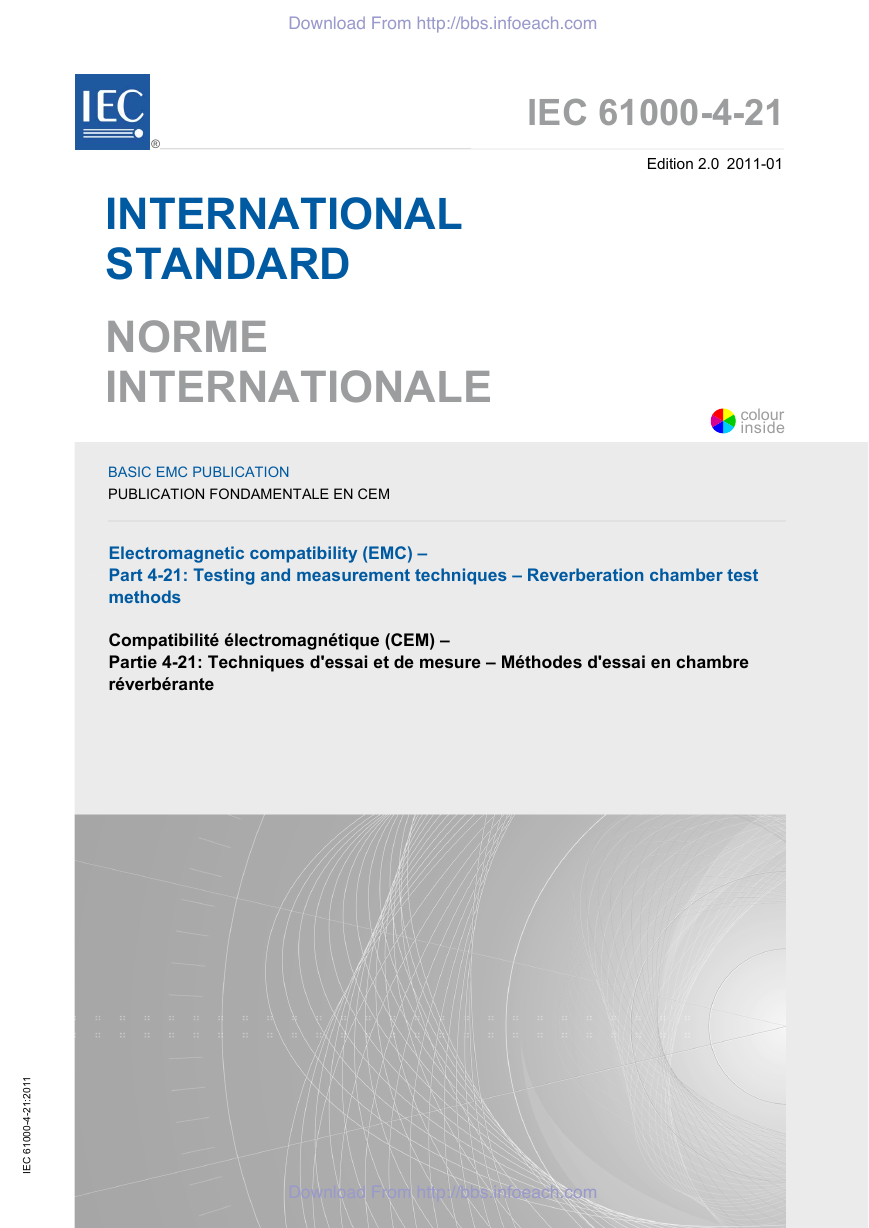
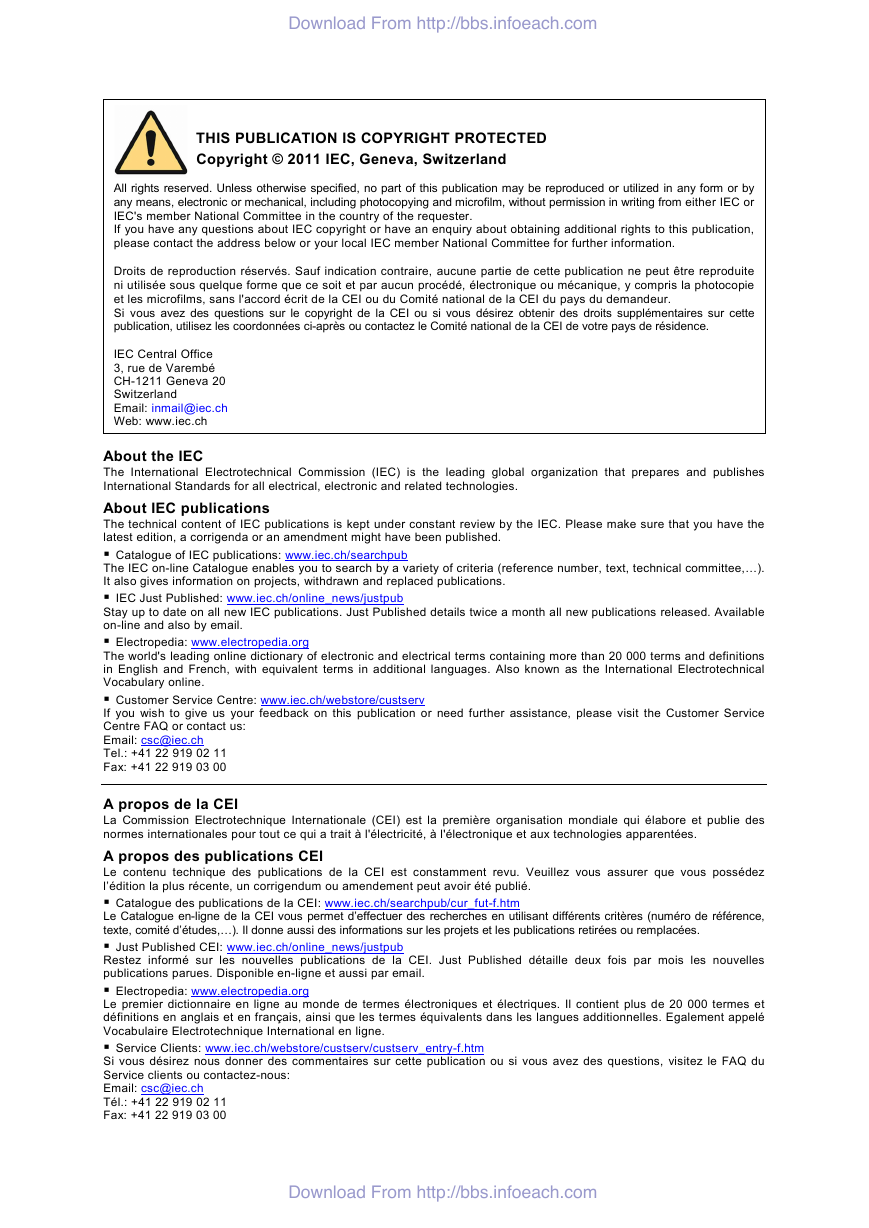
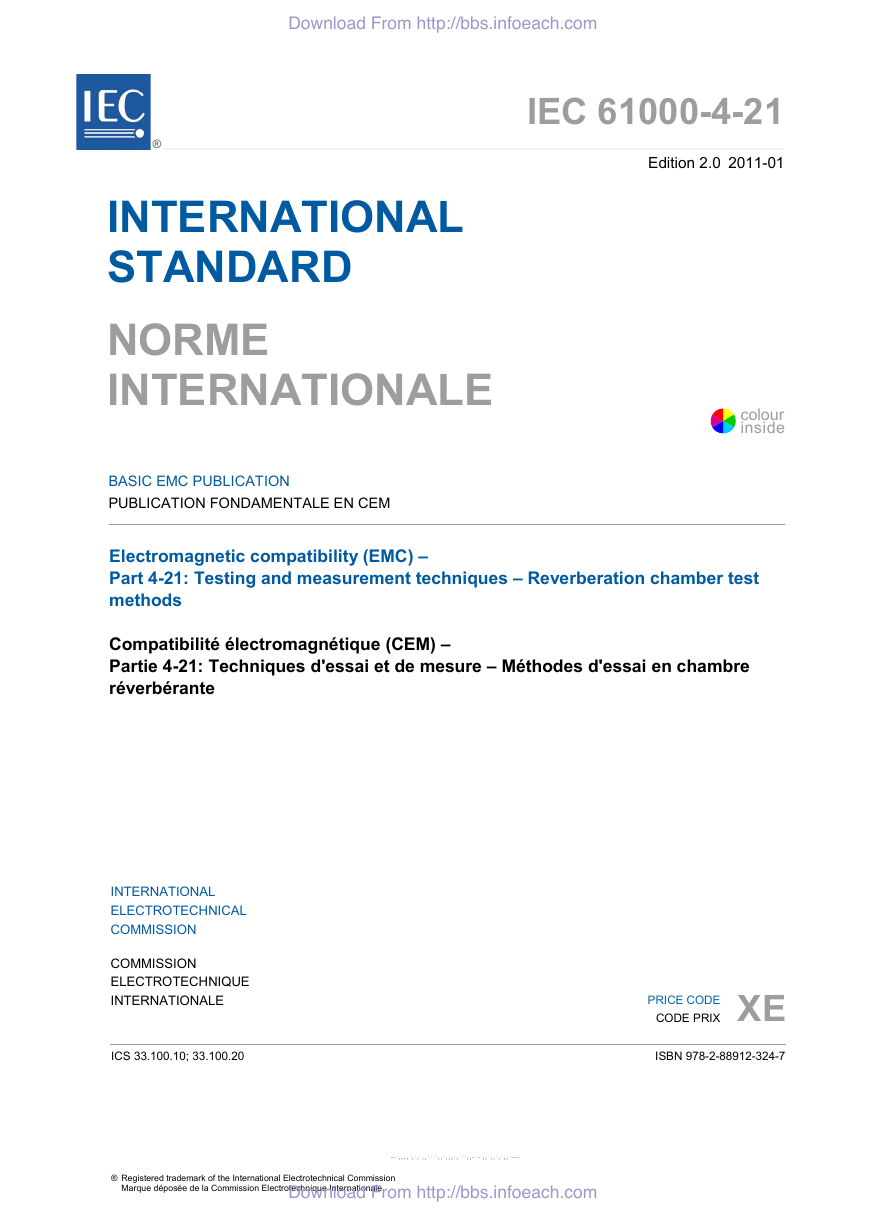
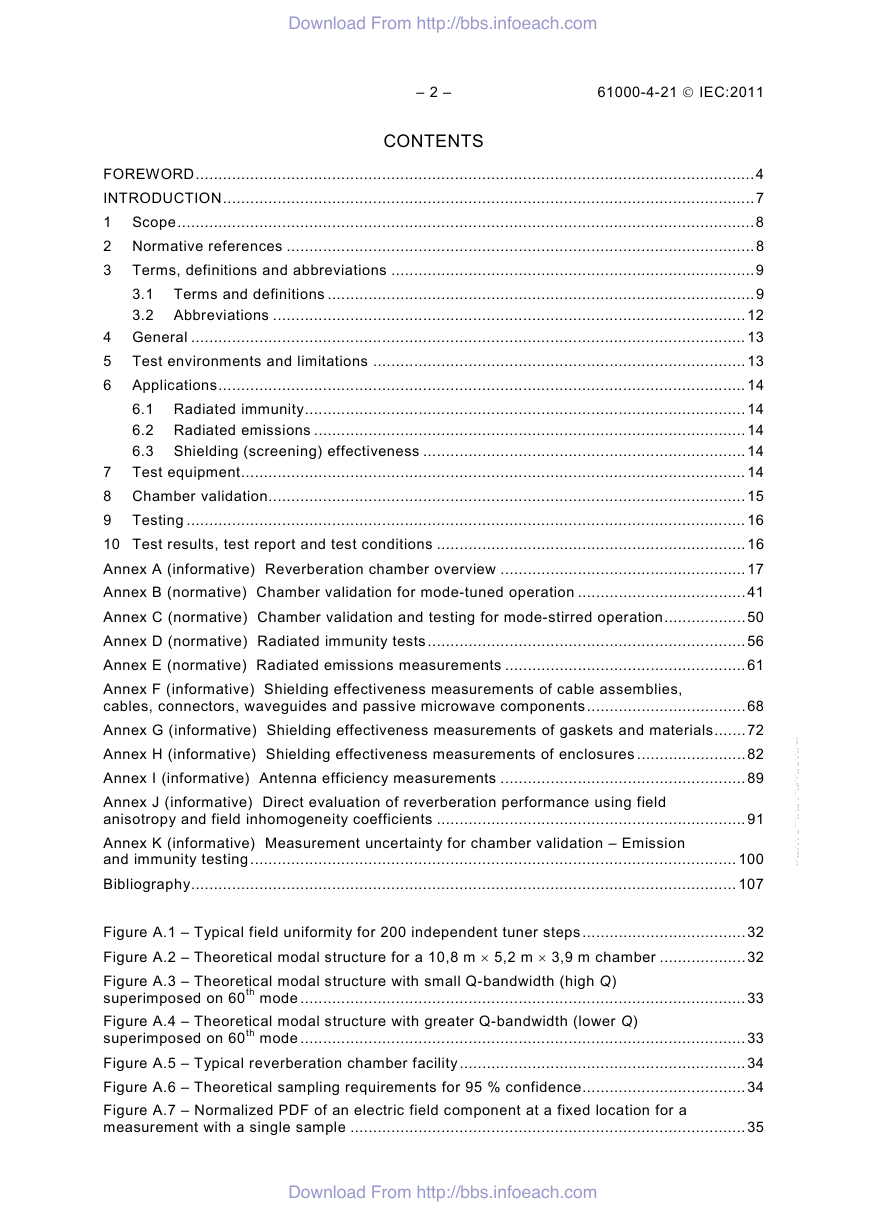
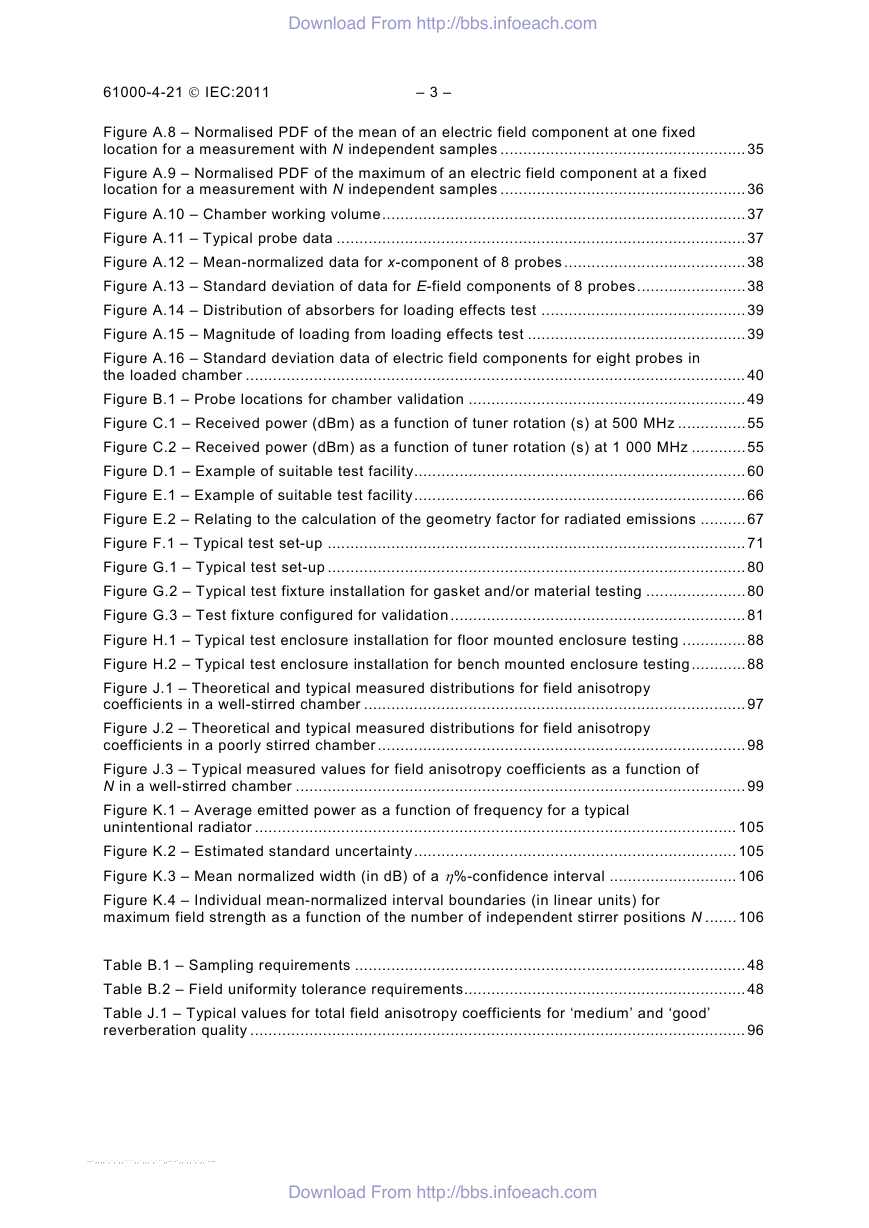
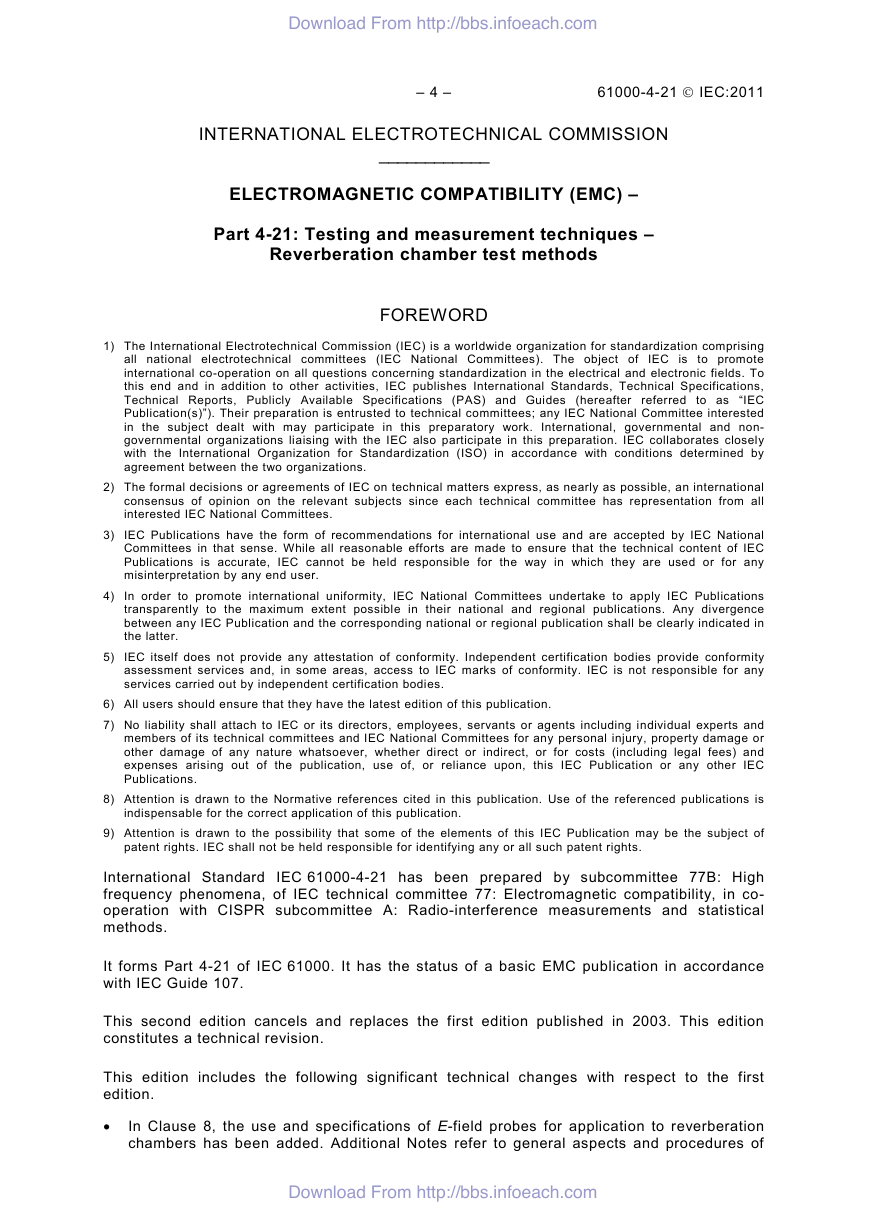
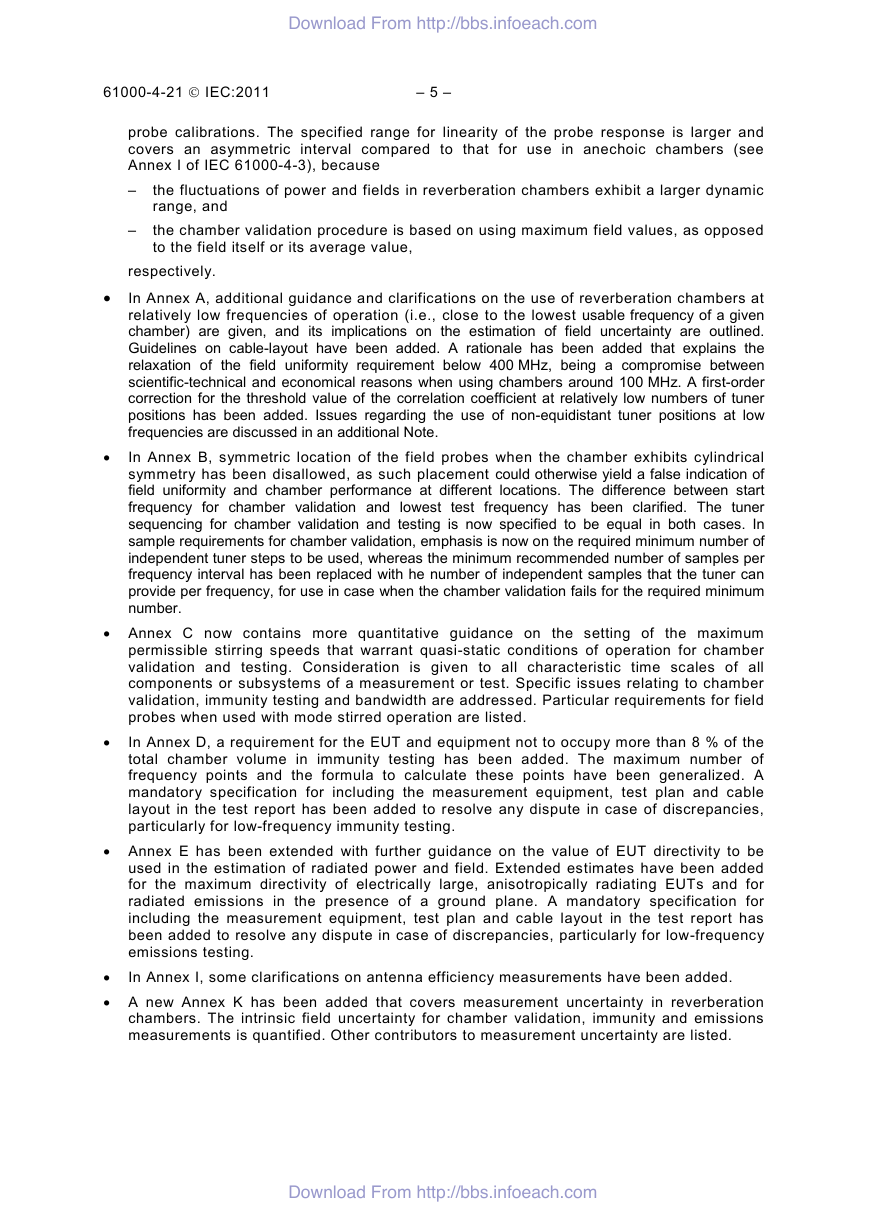
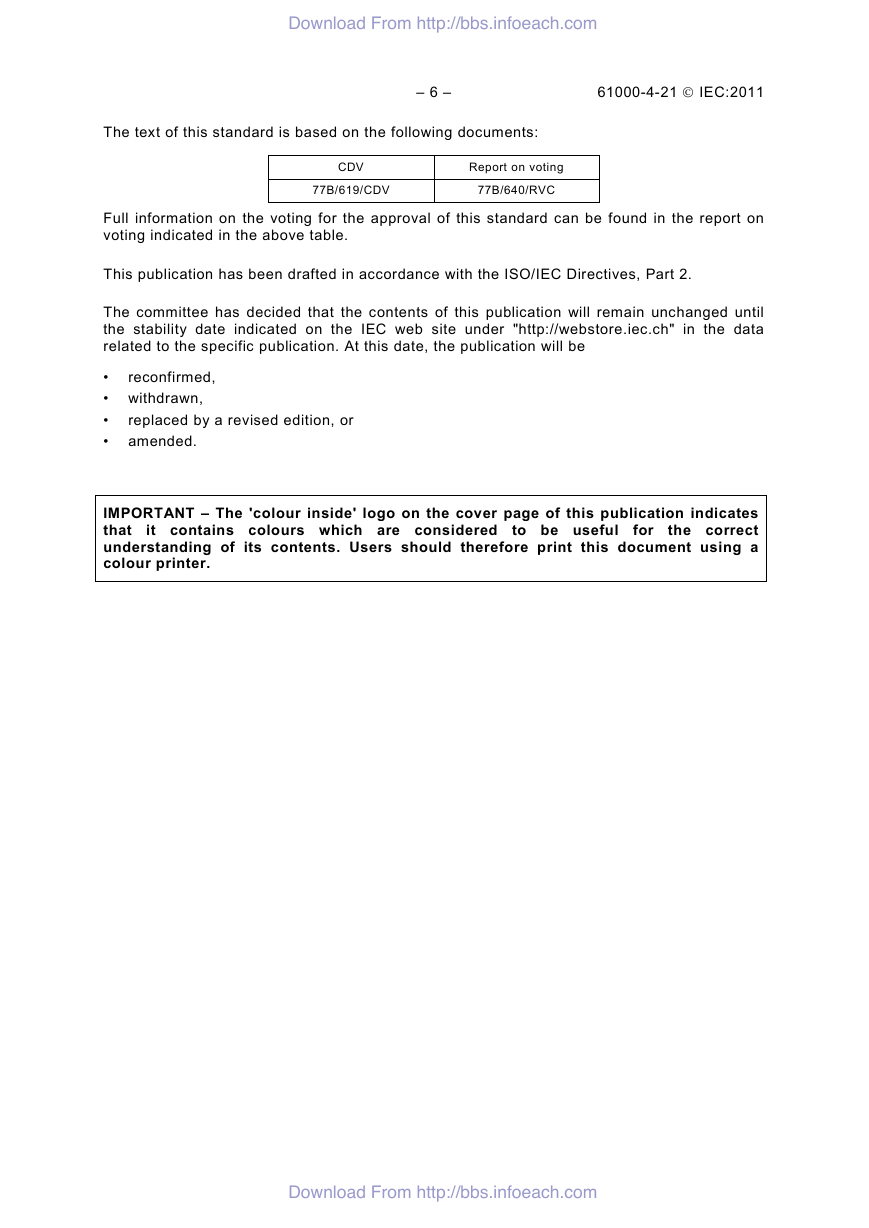








 2023年江西萍乡中考道德与法治真题及答案.doc
2023年江西萍乡中考道德与法治真题及答案.doc 2012年重庆南川中考生物真题及答案.doc
2012年重庆南川中考生物真题及答案.doc 2013年江西师范大学地理学综合及文艺理论基础考研真题.doc
2013年江西师范大学地理学综合及文艺理论基础考研真题.doc 2020年四川甘孜小升初语文真题及答案I卷.doc
2020年四川甘孜小升初语文真题及答案I卷.doc 2020年注册岩土工程师专业基础考试真题及答案.doc
2020年注册岩土工程师专业基础考试真题及答案.doc 2023-2024学年福建省厦门市九年级上学期数学月考试题及答案.doc
2023-2024学年福建省厦门市九年级上学期数学月考试题及答案.doc 2021-2022学年辽宁省沈阳市大东区九年级上学期语文期末试题及答案.doc
2021-2022学年辽宁省沈阳市大东区九年级上学期语文期末试题及答案.doc 2022-2023学年北京东城区初三第一学期物理期末试卷及答案.doc
2022-2023学年北京东城区初三第一学期物理期末试卷及答案.doc 2018上半年江西教师资格初中地理学科知识与教学能力真题及答案.doc
2018上半年江西教师资格初中地理学科知识与教学能力真题及答案.doc 2012年河北国家公务员申论考试真题及答案-省级.doc
2012年河北国家公务员申论考试真题及答案-省级.doc 2020-2021学年江苏省扬州市江都区邵樊片九年级上学期数学第一次质量检测试题及答案.doc
2020-2021学年江苏省扬州市江都区邵樊片九年级上学期数学第一次质量检测试题及答案.doc 2022下半年黑龙江教师资格证中学综合素质真题及答案.doc
2022下半年黑龙江教师资格证中学综合素质真题及答案.doc